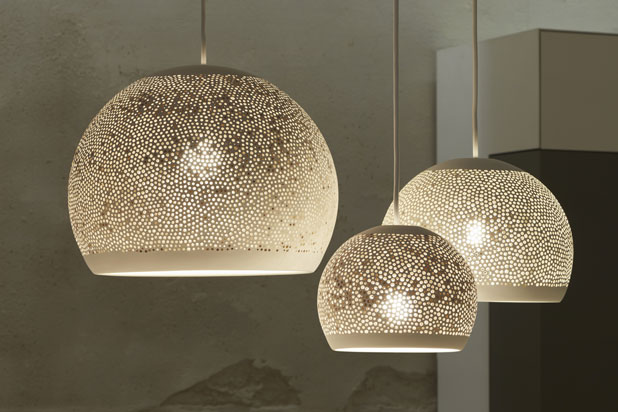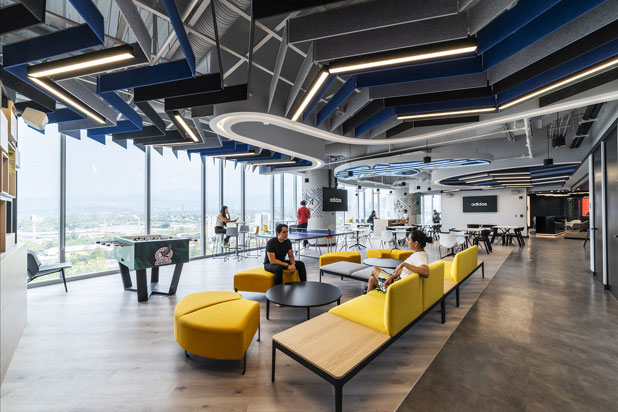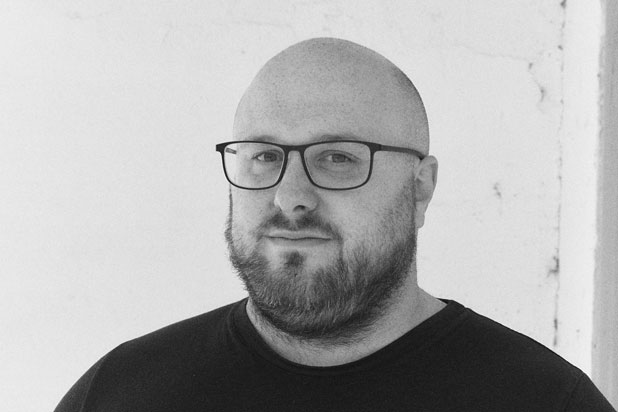Joan Gaspar, who was born in Barcelona in 1966, studied at Barcelona’s Artes y Oficios college. His entire career so far has been linked to the creation of new ranges of products for interior design companies. Notable firms with whom he’s collaborated include Santa & Cole, B.Lux, Sellex and, since 1996, Marset Iluminación.
He is creative director of the latter. He also teaches at Barcelona’s two design colleges, Elisava and Eina.
Interiors from Spain caught up for a chat with Joan – one of the most talented designers on Spain’s creative scene today.
Interiors From Spain: Although you’ve designed furniture, bathroom fittings and street furniture, we’ve noticed that your career has shown a bias towards lighting. Why?
Joan Gaspar: One reason is that it reflects the fact that my first work as a designer was for a small lighting firm called Vapor whose director was Lluís Porqueras. It specialised in designing minimalist lighting at a time when the word ‘minimalism’ was scarcely used. Its lighting was ingenious yet made using a small amount of resources. Lluís taught me a lot about the design profession. He gave me the opportunity to be a designer and I also learnt how things are made and what things need to be taken into account when you do so.
IFS: How do you define good design? And what are the main trends in industrial design today?
JG: In broad terms, I think good design needs to be well-considered and to function well. If it’s also good-looking, so much the better.
I think the trends in design now vary from sector to sector. I think it’s essential that any creative takes environmentalism into account – as well as the whole notion of trends. Designers need to avoid being slaves to fashion as I believe designs which are very hip date almost immediately. I prefer products which can be used for as long as possible, especially when they’re not based on electronic technology.
IFS: Since 1966, you have collaborated closely with Spanish company Marset. What has this experience taught you about how the collaboration between a designer and company can contribute to the success of the products they create together?
JG: I think that the closer the collaboration, the better the quality of work ultimately produced by the designer. Designers benefit from being as informed as possible about a company’s business strategy. And they can only be privy to this if they have a close and ongoing relationship with the company.
IFS:What are your inspirations? And how do you embark on a new design?
JG: My main source of inspiration is observing things – I believe that curiosity in the world around you is essential to the creative process.
I always start projects by doing loads of sketches and drawings. I don’t use computers at this stage of the creative process.
IFS: Do you have a favourite or preferred design of yours? Or perhaps one that you are about to create or would like to create?
JG: I don’t. All I would say is that I don’t regret having created any of them.
IFS:You combine designing with teaching. How do they enrich each other?
JG: I find it hugely satisfying to talk about my experiences as a designer and the best ways to embark on new projects to students interested in these topics. Perhaps one problem for those who are not teachers by profession is what to do when students show little interest in what you’re talking about. It can be difficult to make your work sound interesting to students who aren’t passionate about this profession.
IFS: What are your current projects – and those in the future?
JG: We’re working on a new chair made of injected moulded plastic, to be launched at the beginning of September. I’m also working on a new street lamp and bathroom range as well as a china washbasin.
IFS: What do you think of the design scene in Spain now? What advice would you give to designers who are starting out today?
JG: Well, I think that Spanish design is of a high standard. The problem in Spain is not a shortage of creatives. I think that in the future, many companies need to think about working with more external as well as internally employed creatives in order to refresh their approach to research and development in their business strategy. There’s also the need too for companies to manufacture more products and a need to promote and assist the industry and its economy.
As to those starting out, my advice is – be patient. Also, spend lots of time observing things and constantly generating project ideas even if these don’t result in orders. It’s essential to get into the habit of always thinking of new projects.





































